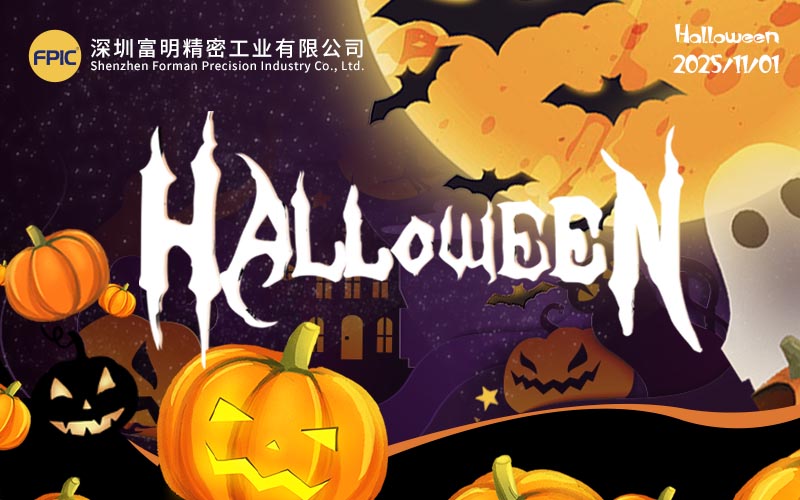Halloween: A Celebration of Tradition, Culture, and Imagination
Every year on October 31, people around the world celebrate Halloween, a holiday filled with costumes, creativity, and community spirit. While Halloween has its roots in ancient Western traditions, it has evolved into a global celebration that blends history, culture, and fun.
Although Halloween is not a traditional Chinese festival, in recent years, it has become increasingly popular in China — especially among young people, schools, and international companies. English training institutions, shopping malls, and offices often organize themed parties, trick-or-treat events, and costume contests to experience this Western cultural tradition.
🎃 The Origins of Halloween
Halloween originated over 2,000 years ago from the ancient Celtic festival of Samhain (pronounced “sow-in”), celebrated in what is now Ireland, the UK, and northern France.
The Celts believed that on the night of October 31, the boundary between the living and the dead became blurred. Spirits could return to Earth, and people would light bonfires and wear costumes to ward off wandering ghosts.
When Christianity spread through Europe, the festival gradually merged with All Saints’ Day (All Hallows’ Day), which was celebrated on November 1 to honor saints and martyrs.
The evening before — October 31 — became known as All Hallows’ Eve, which later evolved into Halloween.
👻 How Halloween Spread and Became Popular
In the 19th century, Irish and Scottish immigrants brought Halloween traditions to North America, where it gradually transformed into a community celebration.
By the early 20th century, it had become one of the most widely celebrated holidays in the United States and Canada, featuring pumpkin carving, trick-or-treating, and costume parties.
Today, Halloween is celebrated in many countries, including:
🎃 United States & Canada – Known for elaborate decorations, haunted houses, and children going door to door saying “Trick or Treat!”
🎃 United Kingdom & Ireland – Celebrated with bonfires, ghost stories, and traditional games like apple bobbing.
🎃 Japan & South Korea – Urban parades and themed events in Tokyo, Seoul, and major cities attract young people and tourists.
🎃 China – While not a public holiday, Halloween is growing in popularity, especially in cities like Shanghai, Shenzhen, and Beijing. Many schools and companies organize costume parties, pumpkin carving activities, and English-language events to promote cultural exchange.
🕯️ Symbols and Customs of Halloween
Halloween’s imagery is colorful and symbolic — each tradition carrying its own story:
🕸️ Jack-o’-Lanterns – Pumpkins carved with faces and lit by candles, symbolizing protection against evil spirits.
👻 Costumes & Masks – People dress up as ghosts, witches, superheroes, or movie characters — combining ancient traditions with modern creativity.
🍬 Trick-or-Treating – Children go door to door collecting candy, a fun ritual of generosity and community bonding.
🏚️ Haunted Houses & Decorations – Homes and stores are decorated with cobwebs, skeletons, and spooky lights to create an atmosphere of mystery.
🎶 Halloween Music & Movies – From playful songs to classic horror films, Halloween has inspired art and entertainment across generations.
🌍 Cultural Meaning Behind the Celebration
Beyond the costumes and candy, Halloween carries a deeper message — it reflects human curiosity about life, death, and the unknown.
In ancient times, it was a spiritual event to remember the dead and protect the living. In modern society, it has become a way to express creativity, share joy, and strengthen community ties.
For many people, Halloween also represents freedom and imagination — a day to step outside of routine and explore another world, even if just for one night.
🕯️ Halloween in China: A Cultural Exchange
While China has its own traditional festivals such as the Mid-Autumn Festival, Dragon Boat Festival, and Qingming Festival, Western holidays like Halloween are becoming a bridge of cultural communication and exchange.
English-language schools and companies often organize themed events to help participants learn about global traditions and practice English in a fun environment.
For young people and international businesses, celebrating Halloween is not just about dressing up — it’s also about embracing diversity, inclusivity, and creativity.
💡 FPIC’s Global Perspective on Culture and People
At Shenzhen Forman Precision Industry Co., Ltd. (FPIC), we value both innovation and cultural understanding.
As we expand our business globally, we continue to embrace the diversity of cultures that inspire creativity and connection.
Just as Halloween encourages imagination and collaboration, FPIC believes that strong partnerships are built through communication, respect, and shared values.
We celebrate not only traditional Chinese festivals but also international ones, reflecting our open-minded, people-oriented company culture.
On this Halloween, FPIC wishes all our employees, customers, and friends a day full of laughter, creativity, and connection — wherever you are in the world! 🎃👻




